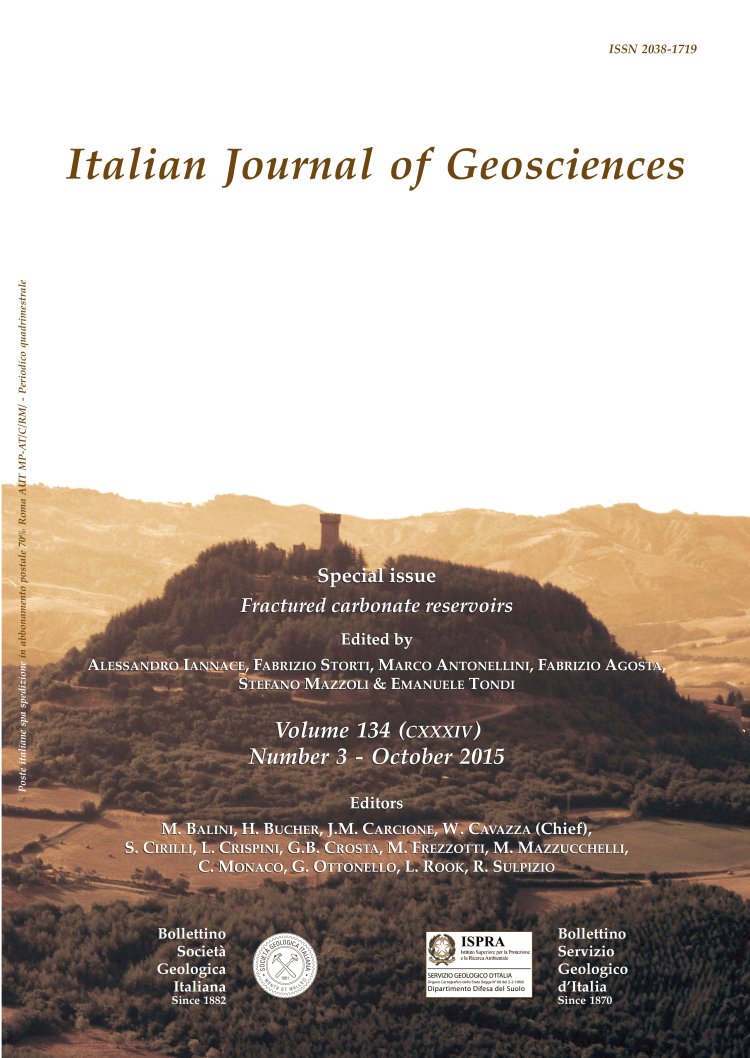
Surface-subsurface structural architecture and groundwater flow of the Equi Terme hydrothermal area, northern Tuscany Italy
Giancarlo Molli (*), Marco Doveri (**), Adele Manzella (**), Livio Bonini (*), Flavia Botti (*), Matia Menichini (**), Domenico Montanari (**), Eugenio Trumpy (**), Alino Ungari (*) & Luca Vaselli (**) (***)
(*) Dipartimento di Scienze della Terra, Università di Pisa, Italy. Corresponding author e-mail: gmolli@dst.unipi.it
(**) CNR - Istituto di Geoscienze e Georisorse, Pisa, Italy.
(***) Via Pozzuoli, 2 - 54100 Massa (MS).
Volume: 134 (2015) f.3
Pages: 442-457
Abstract
A multidisciplinary integrated approach was used to study the structural architecture influencing the circulation pattern of geothermal fluids in the Equi Terme area (NW Alpi Apuane, Tuscany). Geological-structural surveys were carried out to define the structural setting of the area and to characterize geometries and kinematics of fault systems. Chemical (major components) and isotopic analyses (δ18O‰, δ2H‰, 3H, δ13C‰[DIC], δ34S‰[SO4]) were performed on thermal water and cold springs. A geophysical survey was also conducted by means of both Magnetotelluric and Electrical Resistivity Tomography methodologies, in order to gain insight into the
resistivity distribution at depth and to indirectly image the subsurface structure. This multidisciplinary approach proved to be a powerful tool, since it unravels the complexity of this natural geothermal system and provides useful suggestion for reconstructing the fluid circulation outflowing at the Equi Terme thermal spring.
Results pointed out how the E-W oriented fault system (the Equi Terme Fault) play a key role in controlling the thermal groundwater outflow, and the chemical-physical features of this resource. This structural lineament separates high permeability carbonate complexes (footwall), in which both shallow and deep flow paths develop, from a medium-low permeability succession (hangingwall) that contains evaporitic formations from which thermal water
acquires a high salinity and a composition of the Na-Cl (Ca-SO4) type. During the uprising along the fault system, the thermal water is also affected by a mixing with shallow fresh-cold waters that lead to a strong seasonal variation in the chemical-physical properties of the thermal springs.
resistivity distribution at depth and to indirectly image the subsurface structure. This multidisciplinary approach proved to be a powerful tool, since it unravels the complexity of this natural geothermal system and provides useful suggestion for reconstructing the fluid circulation outflowing at the Equi Terme thermal spring.
Results pointed out how the E-W oriented fault system (the Equi Terme Fault) play a key role in controlling the thermal groundwater outflow, and the chemical-physical features of this resource. This structural lineament separates high permeability carbonate complexes (footwall), in which both shallow and deep flow paths develop, from a medium-low permeability succession (hangingwall) that contains evaporitic formations from which thermal water
acquires a high salinity and a composition of the Na-Cl (Ca-SO4) type. During the uprising along the fault system, the thermal water is also affected by a mixing with shallow fresh-cold waters that lead to a strong seasonal variation in the chemical-physical properties of the thermal springs.
Keywords
fault zone architecture, low temperature hydrothermal systems, geophysics, hydrogeology, hydrogeochemistry, structural geology, Alpi Apuane, Italy.
Get Full Text